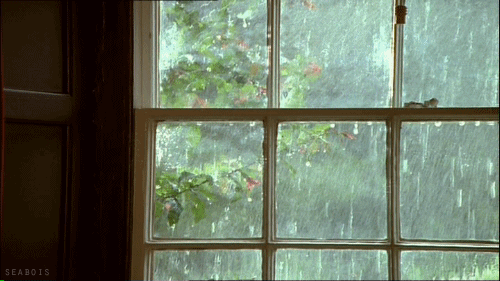“you're your own apocalypse. that is a weekness and a weapon.”
Don't wanna be here? Send us removal request.
Text
happy on a train by wendy cope february to those who celebrate btw
4K notes
·
View notes
Photo
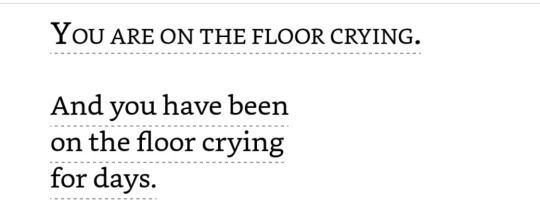


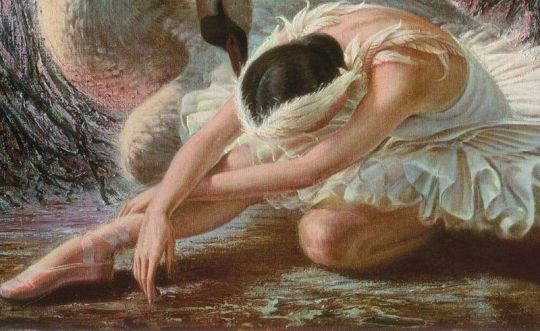

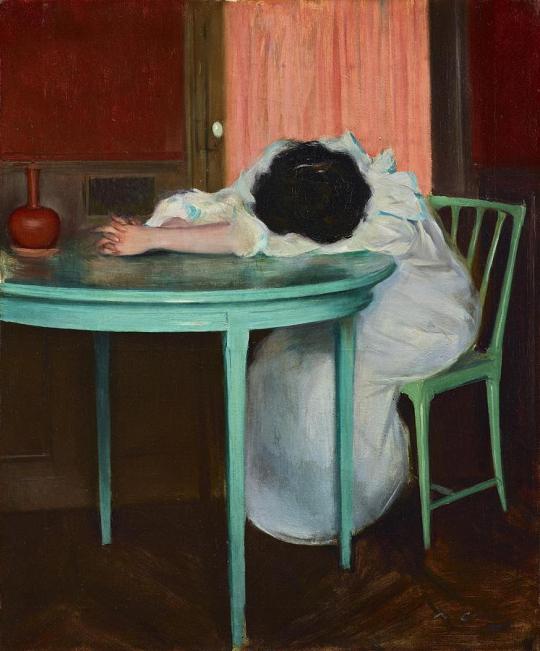
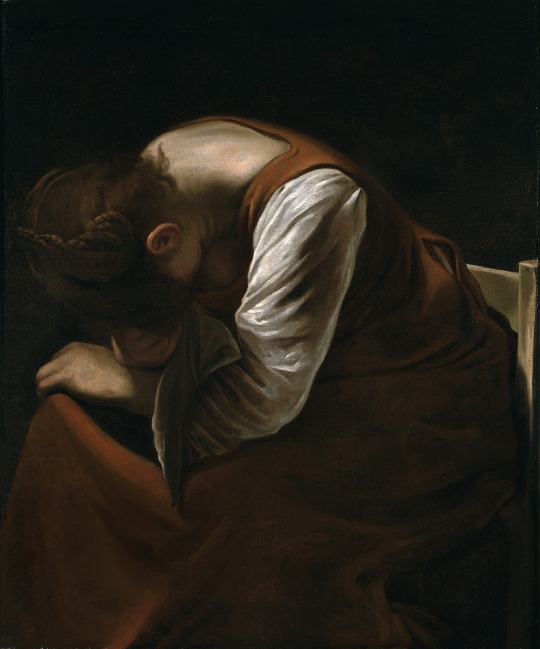



you are on the floor crying, clementine von radics // happy death, albert camus the wedding dress, frederick w. elwell // dying swan, vladimir tretchikoff interview with james hall, richard siken // tired, ramon casas // the magdalene grieving, caravaggio // dirty valentine, richard siken // first love / late spring, mitski // exhausted, andre kohn
7K notes
·
View notes
Text

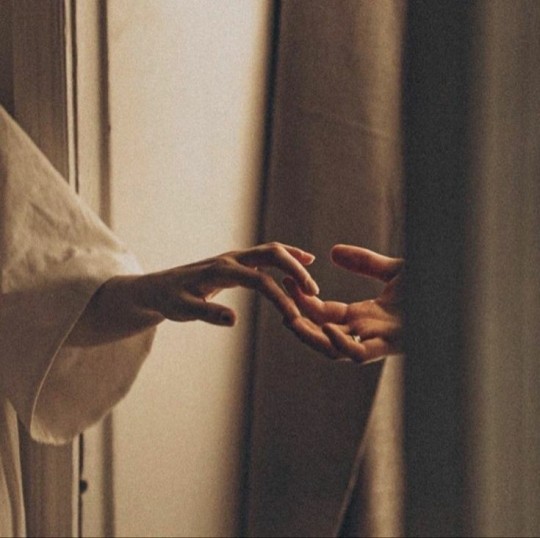
"The more familiar two people become, the more the language they speak together departs from that of the ordinary, dictionary-defined discourse. Familiarity creates a new language, an in-house language of intimacy that carries reference to the story the two lovers are weaving together and that cannot be readily understood by others"
45 notes
·
View notes
Photo

Pablo Neruda, Twenty Love Poems and a Song of Despair (1924)
14K notes
·
View notes
Text
when james baldwin said “you think your pain and your heartbreak are unprecedented in the history of the world, but then you read. it was books that taught me that the things that tormented me most were the very things that connected me with all the people who were alive, who had ever been alive.” I felt that big, big time
33K notes
·
View notes
Text
𝕃à 𝕟𝕒 ℂ𝕒𝕚𝕝𝕝𝕚𝕔𝕙 - 𝕃𝕒𝕕𝕪 𝔻𝕒𝕪
March 25th is associated with the Spring Equinox, the Virgin Mary, and in Scottish tradition, The Cailleach.
This is a time when the Cailleach is thought to have finally given up her struggle against the onslaught of Spring by throwing her hammer/wand into a holly bush. This tool she had been using to keep the land cold and wintry. So March 25th may have been traditionally seen official springtime.
March is also known for its stormy weather, in Scotland, the Cailleachan (lit. 'old women') are also known as The Storm Hags, and seen as personifications of the elemental powers of nature, especially in a destructive aspect. They are said to be particularly active in raising the windstorms of spring, during the period known as A' Chailleach.
March 25th is also known as Lady Day in the Christian calendar, the day when the Virgin Mary is thought to have immaculately conceived.
Personally I don't buy into the idea that the Cailleach 'goes away' during Spring time as to me she is more than just a winter being, but this is Bride's season, so I tend to do something to acknowledge the exchange of the two seasons.
Further Reading:
#thecailleach #lanacaillich #lanacailleach #witchcraft #scottishwitchcraft #scottishwitch #witchesofinstagram #hedgewitch #cottagewitch #hearthwitch #folkmagic #folkwitch #ladyday #folklore #scottishfolklore #ukwitch #ukwitches #celticwitch #wicca #wiccansofinstagram #pagansofinstagram #witchythings #witchyvibes #scottish #scottishbusiness #scottishfolkmagic #magick
instagram
66 notes
·
View notes
Text
The Thrumpin:
Faery Reapers of the Scottish Borderlands
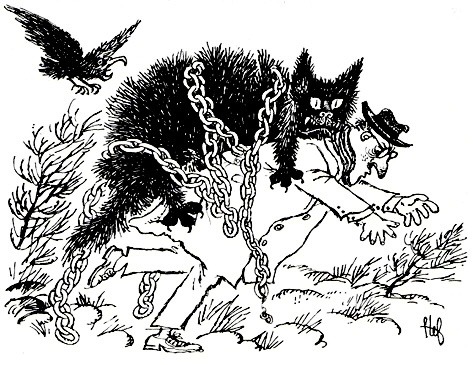
One creature that I find particularly interesting, and which I thought would be worth talking about a little bit here, is an obscure faery spoken of in the folklore of the Scottish Borderlands; the Thrumpin. Very little is known about this creature, as there are only a couple of known historical references to the creature, but it could be simplistically described as a dark inversion of the Guardian Angel. Indeed, the name of this faery likely originates from the Scots word Thrump, meaning ‘to push or jostle,’ which is possibly a reference to the fact that the Thrumpin is an otherworldly force responsible for pushing mortals forward along the path to their ultimate fate.
Thrumpins were said to act as attendant spirits of human fate, with one Thrumpin assigned to every person upon their birth. As such, each of them possesses the power to end the life of the individual they oversee. The reason these faeries were said to act in this capacity remains a mystery, as does the ultimate power behind their assignment in this world, but certain theories do exist as to the nature of the circumstances that lend themselves to a Thrumpin successfully stealing away the life of its charge. Most of what can be gleaned about the matter comes from a single set of rhyming verses, the origins of which aren’t entirely clear, but seem to represent a gathering of oral folk traditions documented within folklorist Thomas Wilkie’s (1789-1838) essay ‘Old Rites, Ceremonies, and Customs of the Inhabitants of the Southern Counties of Scotland’ which was posthumously published in ‘History of the Berwickshire Naturalist Club, VOL. XXIII’ (1916.) The verses are transcribed as follows:
“When the hullers o' night are loorin',
When the quakens are crimplin' eerie,
When the moon is in the latter fa',
When the oolets are scraughan' drearie,
When the ellere'ed are clumperin'
And the toweries hard are thumpin',
When the bauckie-bird he kisses the yird,
Then, then's the time for thrumpin'.
And gif ye miss the mistic hour,
When spirits have been raised by invokerie,
To thrump ilk faithless wight;
The heavens will gloom like a wizard's smile,
And the foumart will dern his carcase vile,
From all uncannie sight.
For man and beast, by the three sterns' light,
Have little chance to shrive;
Till the sixty are past, and not till the last,
Can man and beast survive.”
To the best of my knowledge, there is no known analyzation of the folk-rhyme cited by Wilkie, and so, though I am far from being an authority on 18th century Scots, or on Scottish folklore in general, I managed to construct my own rendering of the verses into modern English using various Scots dictionaries and preexisting contextual clues. It seems to check out, after plenty of double-checking, but I encourage anyone who may know more than me about these subjects to come forward with corrections or additional information. Based on my translations, it can be rendered as:
‘When the mists of night are clearing,
When the poplars are eerily rustling,
When the moon is below the horizon,
When owlets are screeching drearily,
When the Elder trees are galumphing,
When the Powries* are loudly thumping,
When the bat swoops low to the earth,
Then, it’s the hour of the Thrumpin.
And even if you escape that mystic hour
When risen spirits have been empowered,
To push past each untrustworthy watchman,
The skies will darken like a Wizard’s Smile,
And the pole-cat will hide his foul carcass,
From all uncanny sight.
For man and beast, beneath the light of Orion’s Belt,
Have little hope of repentance;
Until the hour is up, and not a minute sooner,
Will man or beast go on living.’
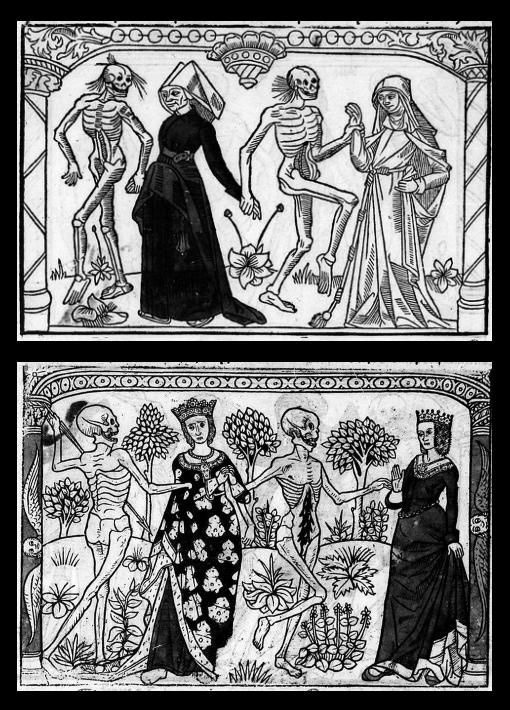
Another variant of this rhyme cited in Wilkie’s essay can be found in William Henderson’s 1866 book ‘Notes on the Folk-lore of the Northern Counties of England and the Borders’. While essentially the same, various linguistic differences can be distinguished, ranging from variations in spelling to entirely different words (the latter, of which, I have bolded.) As put in Henderson’s account:
“He mentions also that in the South of Scotland every person was supposed to be attended by a sprite, who had the power of taking away his life — a strange perversion of the doctrine of Guardian Angels. This is called by the old name of "Thrumpin," and is mentioned in these obscure verses : —
When the hullers o’ night are loosin’,
When the quakers are cramplin eerie;
When the moon is in the latter fa’,
When the owlets are scraughin drearie;
When the elleried are clumperin,
When the toweries hard are thrumping,
When the hawkie bird he kisses the yud,
Then, then’s the time for thrompin.
And gif ye miss the mystic hour,
When vengeful sprites are granted power,
To thrump ilk faithless wight;
The heavens will gloom like a wizard smile,
An’ the foremost will dim his carcase vile
Fra’ all uncannie sight.
For man and beast by the three stones light,
Hae little chance to thrive;
Till the sixty are past, and not till the last,
Can man and beast survive.”
Whether the result of legitimate nuances in translation, or the result of linguistic mistakes on the part of the author, certain differences in translation appear when I render this version into modern English using the same method as I did before. This amended translation reads:
‘When the mists of night are clearing,
When the poplars are eerily rustling,
When the moon is below the horizon,
When owlets are screeching drearily,
When the Elder trees are galumphing,
When the Powries* are loudly thumping,
When the bat kisses the old mare,
Then, it’s hour of the Thrumpin.
And even if you escape that mystic hour,
When vengeful sprites have the ability,
To push past each unreliable watchman,
The skies will darken like a Wizard’s Smile,
And the [corruption of the word for pole-cat] will hide his foul carcass,
From all uncanny sight.
For man and beast, under the light of Orion’s Belt,
Have little hope of prospering;
Until the hour is up, and not a minute sooner,
Will man or beast go on living.’
[**this may simply be a reference to the creature known as the Redcap—which has also been called the Powry—but it’s also quite likely that it specifically makes reference to a specific variant of the Dunter—a Redcap-like goblin which haunts old castles, towers, dungeons, and forts making ominous sounds.]
While it’s entirely plausible that the poetic lines above constitute a generalized construction of eerie presages, in order to serve as a spooky backdrop for discussion of the Thrumpin, it’s not the only way to look at it. Based on the content of these verses, one could posit that the occurrence and conjunction of omens, such as those sorts listed in the rhyme, portend the death-by-Thrumpin of whomever should bare witness to them. And based on the context of the declarations in Wilkie’s essay, I further postulate that the these verses may describe a ‘countdown,’ of sorts, that begins upon the convergence of the aforementioned omens, and which marks the last hour of life afforded to a person by their Thrumpin, before the reaping.
With such scant evidence of the Thrumpin’s role in history and folklore left for us to scrutinize, these claims obviously represent conjecture. However, whatever the case may be, the memory of the Thrumpin and its station as Guardian Reaper lives on, in Scotland, and beyond. In fact, the 1994 play ‘The Skriker,’ by Caryl Curchill, even makes mention of them. In the play—which tells the story of an ancient faery who transforms into numerous forms throughout the story, as it pursues a pair of teenage mothers whom it aims to befriend, seduce and entrap—there is a scene that features a group of businessmen discussing their affairs in a meeting while, unbeknownst to them, their Thrumpins carry on a conversation of their own—presumably about the ways they intend to kill their mortal assignments.
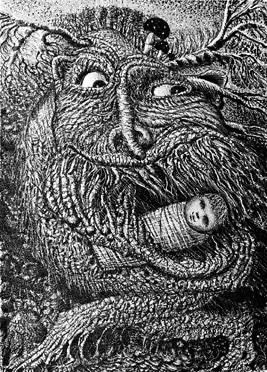
—
Sources:
‘Old Rites, Ceremonies, and Customs of the Inhabitants of the Southern Counties of Scotland’ by Thomas Wilkie (1789-1838)
‘History of the Berwickshire Naturalist Club, VOL. XXIII’ (1916)
‘Encyclopedia of Fairies: Hobgoblins, Brownies, Bogies, & Other Supernatural Creatures’ by Katharine M. Briggs (1976)
‘Notes on the Folk-Lore of the Northern Counties of England and the Borders’ by William Henderson (1866)
‘William Henderson’s Folk-Lore and Thomas Wilkie’s “Old Rites”: A comparative approach’ by J.B. Smith (2011)
‘The Skriker’ by Caryl Churchill (1994)
#Thrumpin#faery#faeries#faerie folk#fair folk#fairies#traditional folklore#Scottish folklore#Old Rites Ceremonies and Customs of the Inhabitants of the Southern Counties of Scotland#History of the Berwickshire Naturalist Club VOL. XXIII#Encyclopedia of Fairies: Hobgoblins Brownies Bogies & Other Supernatural Creatures#Notes on the Folk-Lore of the Northern Counties of England and the Borders#The Skriker#Thomas Wilkie#Katharine M. Briggs#William Henderson#Caryl Churchill
408 notes
·
View notes
Text
YOU CAN'T FIGHT IF YOU CAN'T EAT.
a poem by fictional character Holly King
We are friendly because we are hiding our violence
we sing because we are hungry,
our food is poisoned
we dance because we know no rest
All of our existence we've been restless, homeless, colonized.
we say "there's no war in this country" because we don't know what peace feels like
since the sixteenth century it's been war, hunger, anger
we are made of stolen blood, sacrificial flesh, children of a godless land.
and, yet, they claim we are not awake
because carnival, football and what's on television — it's the only life we are allowed among our failed try of survival.
9 notes
·
View notes
Note
Do u have source recommendations for learning abt Scottish folklore? Ty for running such an awesome blog!
Thank you! I’m very glad you like it ^^
And let’s see, Scottish folklore…
The good thing about Scottish folklore is that it is very popular, a big inspiration for many modern versions of mythical and legendary creatures and concepts, and widely available in English.
The downside of this is that Scottish folklore is often lumped together with Irish, or even English folklore, and taken from English collections instead of actual Scottish sources. (Not the mention the issue of Scottish Gaelic being repressed as a language, and cultural vessel and many of the proper old stories with it, but I am by no means the person to get into that.)
So, I would recommend:
A very accessible place to start (and verifiably Scottish TM) is Scotland’s National Tourist Organisation. They actually have a really nice online e-book about Ghosts, Myths & Legends. It has pages on specific creatures and places, with illustrations and quite a few of the stories have been recorded so you can listen to them. (These are all pretty short entries, but a good place to start and find things you want to know more about.)
If you like listening to stories and folklore, the Celtic Myths and Legends Podcast is a good one. I sang its praises earlier here. You can pick out the Scottish episodes fairly easily.
The Internet Archive has some good old folklore books on file. I have not read these myself, but they are all by Scottish authors:
Clan Traditions and Popular Tales of the Western Highlands and Islands ( 1895). Collected from oral sources by John Gregorson Campbell.
Scottish Fairy and Folk Tales (1901). Selected and edited by George Brisbane Scott Douglas.
A Collection of Ancient and Modern Scottish Ballads, Tales, and Songs: With Explanatory Notes and Observations Vol. 1. & Vol. 2. (1815). By John Gilchrist.
Folk Tales and Fairy Lore in Gaelic and English (1910). Collected from oral tradition by James MacDougall.
And since we’re talking of books. There is a 4-volume collection called “Popular Tales of the West Highlands” by John Francis Campbell, a Scottish scholar and author who is basically a legend of Celtic studies. His collections were written up in the mid 1800′s and since he spoke Gaelic himself and travelled around to personally collect the tales they are very well sourced. (I have volume one and two and have only read tiny bits of it, but every time I open it I squeal a little at the fact that whenever possible the professions of the original storytellers are recorded in the source list.) So if you want a beefy book to geek out over, give this a try!
Oh and I have to sneak one book in that is not by a Scottish author (Sorche Nic Leodhas is an alias for the American author LeClaire Gowans Alger):
Thistle and Thyme, Tales and Legends from Scotland (1962). Retold by Sorche Nic Leodhas.
This book is one of my absolute favourites and includes what I consider the best romantic fairy tale: The Mermaid’s Ring. Sorche stays faithful to the original tales (as far as I can find out) but presents them in a wonderful way. This one is also available on the Internet Archive and I beg you to give it a read.
I hope that was helpful!
58 notes
·
View notes
Text
Sydney Pierce
The Caileach is the Goddess of winds and winter. She's known as a wild destructive nature, mother of many children, mostly whom she outlived. She's not good or evil; she's both and none. She's the queen of Fairyland and needs to pick a descendant for the autumn seasons — a prince or princess to rule over the land during this of the year. So, a long ago, she chose Seasaidh (meaning "will stand") — known for her piercing eyes and time spent playing out at the meadows — her eldest daughter.
Seasaidh grew up surrounded by nature, luxury and people adoring her because of her beauty and mother. Although she was a pixie, people treated her like a delicate goddess, but she often felt overshadowed by her mom, the queen. Seasaidh loved to dream about a life where she meant something beyond just a pretty fairy who's mother is powerful. Seasaidh wanted power. She wouldn't have power as pixie though.
That's when Seasaidh meets Enante (or Sophie McKoy) a bacchante. They share a special night at Lughnasadh (harvest) — sleep together — and Enante tells her all about being a bacchante; Seasaidh is determined to become one, so she reaches out for Dionysus. Her mom warns her: if she leaves, she won't come back. “A bacchante can’t be a princess, because princesses don’t get to have their desires fullfilled.” Actually, Mother wanted her to go and leave and be free so she could go back already full. Seasaidh leaves and is renamed Trígie.
Centuries passed. She saw the raise and fall of the ancient world, countries and wars. She's been among all man and woman, kingdoms and revolutions. Trígie became a powerful bacchante, the most devoted one and traveled throughout all the continents. She loves poetry — had a relationship with Emily Dickinson — reading and taking pictures. Tríge is confident with her body, she loves partying, drinking, having a one night stand and having fun with her girl friends while they murder man for their one true love — Dionysus. They see life as a cicle, death is just part of it. They believe in reincarnation. She believes she’s no longer hungry.
In the 21th century, Trígie chooses the name Sydney — for this name means wild meadow, a place she used to love when she was Seasaidh — and Pierce because of her eyes. This is the first time she's back to Scotland since all those centuries ago.
Sydney Pierce is a 17 years old teenager who loves taking pictures, going to The Baccchanalia and dancing. She's missing Fairyland, but mostly, having a home — because she feels like her whole existence have been a party that she never gets to leave, to lay in a bed and rest — but her girl friends are all fine, so Sydney starts to feel excluded. Scotland makes her feel on edge, as if there's something calling her there — something that will take her power away.
She thinks she’ satisfied but she only ever eats with Dionysus. Wine and grapes. A man’s heart because a god wants her too. Her desires are not being fullfilled and she’s still hungry. Then, she meets Harry.
He is innocent. His eyes are pure, has no idea of what's going on. Syd never met such a kind, generous and naïve human being. She is astonished by him. Sydney starts to feel as if there’s some hunger left, something that lives with her since Fairyland. She wants to be loved and adored, she no longer wants to be devoted to a god because Sydney found someone. She really likes Harry and the teen life in general. Their little fights, their innocence, their will to change things and be able to say what they want and how they want it. Suddently, she feels as if being with Dionysus never made her really free. But, she’s afraid to leave and be with Harry because a bacchante can’t love another man.
FAVOURITE EVERYTHING:
Bands: The Lumineers
Singers: Taylor Swift, Hozier, Florence and the Machine
Music: Mad Woman by Taylor Swift, Seven Devils by Florence
Movie: The Witch
Book: The Hunger Games
Color: red, green, gold, brown, black
Food: wine and popcorn
0 notes
Text
”I am a woman. I am hungry.”
The nineth man murdered by the bacchants is Richie Mckenzie, 49, a teacher that harassed Sydney — telling her she's not just a lad, she's a real woman — she calls him at night so they can meet at the end of a mysterious road. When he arrives, she says she invited some friends so they can all have fun together.
He gets out of the car. The girls dance around him. Sydney acts like she's seducing him. She touches his chest, leans in and whispers:
”You were right earlier, you know? I am a woman — her hands travel to his trousers, inside, holding him firmly with both hands — I am a woman. I am hungry.”
She cracks him.
And Kiwi by Harry starts playing.
While watching him in pain, her friends attacking him to eat his heart, Sydney smokes a cigarette.
0 notes
Text
🦋🌼Lost In Fairyland🌼🦋
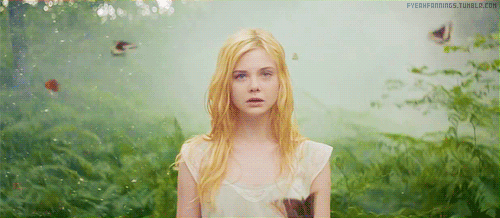
🌼 One of the most common tricks fairies around the world play on humans is leading us deep into the woods, or into some other strange and indecipherable world, where we lose sight of all things familiar to us and wander dazed and confused for an indeterminable period of time- perhaps forever. In fairy tales, the forest serves as a metaphor for the unknown. We dread going there, but ultimately we must plunge onward-guided, as it were, by magical beings-if we are to unravel the age old mysterious and grow into our full potential. The forest also represents the unconscious, where all fears, memories, and wisdom lie, the quintessential realm of darkness waiting to be illuminated and explored. It symbolizes the “road less traveled”, the primal,unadulterated , and uncharted path that leads us away from conventional, “safe” thinking and into the uncertain and creative territory of our own psyches.

🦋 Getting lost in fairyland can be one of the most enlightening things that could ever happen to a mortal. Following the fey into the forest represents reconnecting with what you know to be true in your heart of hearts, rather than going along with what society has taught you to believe. It signifies relying on your intuition, not just your intellect. And, as so many legends warn, you may never come back- for once you’ve gone beyond the limits of mundane thinking,plumbed your depths, and achieved a heightened sense of awareness, you can never return to the ordinary world you inhabited before the fairies intervened.

742 notes
·
View notes
Text
Desmond Styles was a strict parent. Son of a business man, he believed that success meant working hard, always, and be the best at everything. Desmond had an easy time at studying, getting into college and being part of lots of clubs. He also had time for extracurricular activities; at least, that's how he used to remember once it was his time of raising a child. He romanticized his past a lot. Desmond named his boy "Harry Edward" after many kings whom made history. But Harry was a dreamy boy; he'd get lost in his mind a lot when little, and wanted to watch the nature around him. He liked to climb on trees, bring small but dangerous animals home and play with other kids, especially at school. He was energetic, talkative and charming.
Harry liked climbing trees, watching the wind on the grass of the meadow, butterflies, sunlight bathing on a coffee cup and wearing flower crowns. Making paint with dirt and leaves. He would create dangerous "adventures" in his head that would always end up with bruised knees and broken fingers.
The fairies always watched him.
So Desmond decided that Harry should be homeschooled.
That's when Desmond started to beat him; everytime he'd climb a tree, care for an animal, put a flower on his hair. Harry grew scare of nature and believed books and hard work would protect him. He'd spent nights wide awake trying to get the best grade, to be the first at every extracurricular activitie — he studied latin, french, swimming and basketball — so he wouldn't get beat on. Harry became quiet, supressing his emotions, hiding behind good grades and books. When he was ten, Desmond decided he was okay to go back to school. This time, Harry felt like crying everytime someone spoke to him in class but this changed a little when he secretly got into Drama Class. He doesn't know what caught his attention. He was captivated by the idea of freedom on the stage, the freedom of using your body for art. Maybe his "wrong" emotions could be useful. That's how he became friends with Louis, then Niall and then Liam and Zayn.
His first play was Knights of the Round Table and Harry was King Arthur.
Harry liked drama classes, running around with his friends, butterflies, autumn — he likes that the moment before death is beautiful — painting and children. He's always helping them around school. But he hates his father so much for still hurting him, his mother, for writing dreadful stuff on the newspaper he works for. Harry likes traveling to Dean Village because his uncle Sean leaves him be; he doesn't care about what he does. Before Des' death, he found out about Harry's Drama class and swore on the phone he'd beat him until he was bleeding. Harry wished him to die. He didn't cry when he actually died, but mourned his mother — always so omitted.
His father died 4 years ago — so Harry was 13.
Anne had depression. She would hallucinate about this perfect house by the ocean — describe everything with details. Sometimes Harry feels like part of that daydream too. Anne Styles (neé Agnew) was from the Agnew Clan and liced in Middlebie until her death.
BY WISDOM NOT BY RASHNESS.
Sydney catches Harry's attention because she seems confortable with her flower crown. Then, she talks about feeling free in nature and how her favourite season is autumn because she likes the cicle of nature — death being just part of it, not the end — and because she's curious about who he really is, although that also scares him. Eventually, he starts to like her because of her sense of humor, because there's no effort in being perfect — of imperfect like Sydney says — and because, around her, Harry feels like connecting with his inner child. She astonishes him with every new adventure, she's never afraid — and then he finds out why.
Harry's afraid at first, but then he's in the process of being himself. And he decides he doesn't care about anything but Sydney. "Love is the greatest sin, the optimum vicious act of human kind." So he chooses Sdyney over and over again.
He also likes the idea of being immortal, to learn and know every language, culture, people, country. Every piece of land.
On his free time, he likes to hang out with his friends. He goes to concerts with Zayn (who gave him his fox beanie), eats out and have sleepovers with Niall, the friend who he can be the silliest and dumpest version of himself, but also the one who cleans his tears — Niall also have him a sketchbook —, Louis, the one who copies his homework, is very sarcastic but protective, sometimes treats Harry like a baby and Liam, the mom friend.
Favourite everything:
Bands: Snow Patrol, LovelyTheBand, The Bluebells.
Singers: Lewis Capaldi, Lukas Graham, Lana Del Rey
Music: These Are My Friends by LovelyTheBand, Another Night on Mars by The Maine, Let Me Love You Like a Woman by Lana Del Rey.
Books: Sunset Song by Lewis Grassic Gibbon and Harry Potter and The Half-blood prince by JK Rowling.
Painters: William McTaggart, John MacDonald
Dream job: english or drama teacher
Subjects: Music and English Literature
Color: orange, red, gold
Food: Pumpkin crumble, anything with pumpkin.
0 notes
Text

TENDER ROSE, ENDURING DEVOTION ✽
Harry Styles x oc
fantasy, longfic
Harry Styles is Dean Village's bonnie golden lad. He's prefect at school, has always the best grades and the greatest team of friends he could've ask for - everything in his life is perfect, and every detail is planned: school, college (University of Edinburgh, thank you very much!) career, marriage, kids, maybe a dog and grandkids. That is, until he meets Sydney Pierce, local new lass whose piercing voice and intriguing eyes catch Harry's attention as much as the murders around Dean Village - which started at the same night Sydney arrived.
#harry styles#1d fan fiction#one direction#one direction fanfiction#harry styles fic#Wattpad#writing
3 notes
·
View notes
Text
library date?? coffee shop date??? museum date?? art gallery date?? stargazing date?? napping date?? picnic date??? yes
215K notes
·
View notes
Text
idk but this needs to be in the story
Amazing. This is ten thousand year old water trapped inside of a polished quartz crystal.
(Source: 1•2•3)
169K notes
·
View notes
